For homeowners, having dedicated backyard sports courts in their backyard or within their home is a dream come true. This post is your key to realizing your dream!
Whether you’re a sports fan looking to improve your skills, a parent looking for a safe and entertaining area for your children, or a homeowner looking to increase property value and aesthetics, an outdoor backyard basketball court is the solution.
A backyard basketball court has numerous advantages. For starters, it allows for hours of outdoor workout and is more convenient than driving to a nearby gym. Furthermore, unlike a pool, a basketball court is inexpensive and simple to maintain. It can also increase your home’s resale value.
However, the most significant benefit of constructing a basketball court in your backyard is attracting friends and family for a pickup game and a cool drink afterward. It makes an excellent centerpiece for any cookout or event.
This blog will review the options, considerations, and expert advice you’ll need to turn your sports court fantasy into a reality. Prepare to enter the world of home sports courts, where play has no bounds.
Planning Your Backyard Basketball Court:
- Identify your goals and limitations.
Before you do anything, clearly understand how you want to use your backyard court. Here are some questions you should ask yourself:
- Are you looking for a fun way to get your kids outdoors?
- Are you dedicated to improving your game and looking for some serious practice?
- Would you like to host tournaments for your family and friends?
- Are you looking for a multi-sport court that can accommodate pickleball or volleyball?
Once you have a clear image of your ideal court, we recommend contacting professional basketball court builders (like us!). This will help you acquire a realistic price and determine your project’s budget. A professional sports court installer near you will be able to advise you on where you can save money versus spending money based on your goals and provide you with an expected schedule.
- Choose a Size and Location.
Depending on your needs, you may prefer a full-court, half-court, or custom basketball court size. Visit our backyard basketball court page for specifications for regular junior high and high school basketball courts.
Also, analyze your backyard space and consider the following:
- Proximity to neighbors (consider noise issues and basketballs soaring over fences).
- Daily sun exposure (If you are in Atlanta, you may want to choose a shadier place.)
- Space requirements are dependent on the chosen court size.
- Surface Selection: Which is Ideal for Your Sports Court?
Choosing the correct surface for your outdoor backyard basketball court is a critical decision that affects playability, safety, and long-term upkeep. Asphalt, concrete, and synthetic rubber options bring unique qualities and considerations.
Asphalt Surfaces are known for their strength and adaptability. They make an ideal surface for basketball, tennis, and inline hockey activities. The evenness and traction of asphalt enable smooth ball movement while lowering the risk of slips and falls. However, frequent care is required to keep an asphalt court in good shape. While this alternative provides great performance, the long-term maintenance cost may be slightly higher.
Add Bounce To Your Backyard With A Home Basketball Court Installation
- Concrete surfaces are incredibly durable and low-maintenance, making them a desirable option for homeowners seeking longevity and ease of upkeep. Concrete, with proper finishing and texturing, can provide good traction for games such as basketball and pickleball. It can also be customized with color coatings or court markings to suit your aesthetic preferences. While concrete may not absorb as much shock as synthetic rubber, it can provide a stable foundation for various sports and activities.
- Versacourt Synthetic: Sport court tiles, often known as rubber surfaces, are engineered for optimum shock absorption, making them the best option for high-impact sports such as tennis and basketball. The interlocking tiles create a cushioned surface that is easy on joints and has excellent traction.
Looking for professional basketball court builders in Atlanta?
- Backyard Basketball Court Dimensions.
Basketball court measurements vary based on age group and league level. Court dimensions vary between high schools, gyms, and recreation facilities depending on who uses the court. If you’re trying to figure out how to make your backyard into an outdoor basketball court, the dimensions listed below will be useful:
- Official NBA court dimensions: 94 feet long by 50 feet wide.
- High school regulation courts measure 84 feet long by 50 feet broad.
- Junior high school regulation courts are smaller, 74 feet long and 42 feet wide.
- Backyard residential basketball courts can be erected in an area as small as a 26-foot by 26-foot area.
- Acrylic Coating Application.
The court’s playing surface comprises a final layer of acrylic coating. This process has multiple steps:
- Primer Coat: A primer is applied to the initial layer to ensure that the acrylic coating adheres correctly to the underlying layer.
- Acrylic Resurfacer: A thick sand-grain-filled backing plate smooths out defects and gives uniformity.
- Color Coating: A color coating consists of multiple layers, each of which is applied after the previous layer has dried. This brightens the court’s colors and increases its hardness and appropriateness for play. The final coat is usually made of a rough surface to improve grip.
- Line Marking: Court lines such as the key, three-point line, and free-throw line are painted with specialized line marking paint. Precise measurements are necessary to guarantee that the court meets its standard requirements.
- Accessorizing Your Court.
Try adding lights, seats, and shade structures to make your backyard basketball court more functional and enjoyable. These modifications can increase visibility, provide comfort for spectators, and shield players from the sun.
- Lighting for Night Games.
Proper illumination is required for safety and visibility if you intend to play basketball at night. Consider the following choices for lighting your outdoor basketball court:
- LED floodlights: These energy-efficient lights give strong and focused illumination on the court.
- Solar-powered lights: Environmentally friendly and cost-effective, solar-powered lights can be installed around the court to provide illumination during nighttime games.
- Seating and Shade Structures.
Consider adding seats and shade structures to your backyard basketball court to make it more comfortable and entertaining for players and spectators. This could contain benches, seats, or even a designated seating area. Additionally, shade structures such as pergolas or umbrellas can shield players and spectators from the sun’s rays.
- Quality Assurance and Testing.
Once the construction was completed, a thorough inspection would be required. Look for surface irregularities, ensure the lines are well-defined, and determine whether the pitch has appropriate drainage. The court would need to be cleaned completely before it could be used.
Additional Maintenance and CareTips
To keep the quality of the backyard sports courts, use the following maintenance practices:
- Regular Cleaning: Cleaning should be done regularly to eliminate debris, filth, and greenery. To clean thoroughly, use mild soap and a delicate brush.
- Periodic Resurfacing: These surfaces typically resurface every 3-5 years, barring unusual conditions.
- Inspect for Damage: Check your surfaces for splits, dents, and flaking periodically. Fix them as quickly as possible to prevent the problem from worsening.
Want to build your dream outdoor backyard basketball court? Let us help you!
At Outdoor Makeover and Living Spaces, we offer you the best sports court installations near me in Atlanta and surrounding areas. With years of experience, our team of basketball court builders knows how to transform ordinary backyards into interesting recreational places. We cater to various interests, from building basketball courts and soccer fields to designing mini-golf courses and bocce courts. Our competent team of specialists ensures that each installation is carried out correctly, with safety and longevity in mind.
So, what are you waiting for? Contact us today!
FAQ’s
1. What are the ideal dimensions for an outdoor basketball court, and can they be adjusted for smaller spaces?
The official dimensions for a full-sized outdoor basketball court are 94 feet long by 50 feet wide. However, you can adjust the dimensions proportionally for smaller spaces, keeping the same aspect ratio.
2. What are the most common surface materials used for outdoor basketball courts, and what are their pros and cons?
Common surface materials include asphalt, concrete, acrylic, and polyurethane. Each has advantages and disadvantages regarding durability, cost, and playing surface. For example, asphalt is durable but can become slippery when wet, while acrylic offers good traction and low maintenance.
3. How important is proper drainage for an outdoor basketball court?
Proper drainage is crucial to prevent waterlogging and ensure a safe playing surface. To facilitate drainage, consider using perforated geotextile fabric and a layer of gravel or sand beneath the court surface.
4. What factors should be considered when choosing an outdoor basketball court location?
Factors to consider include sunlight exposure, privacy, accessibility, and potential obstructions. A location with ample sunlight is ideal for playing, while privacy ensures uninterrupted enjoyment.
5. How can I ensure the court is level and smooth?
Use a laser level to ensure the base is perfectly level. Consider using a self-leveling concrete mix or a specialized sports court surface for a smooth surface.
6. What are the recommended line markings and court markings for an outdoor basketball court?
Adhere to official FIBA or NCAA regulations for line markings and court dimensions. Use high-quality paint or court marking tape that is durable and visible.
7. Is it necessary to install a backboard and hoop?
Yes, a backboard and hoop are essential components of a basketball court. Choose a durable backboard and a high-quality hoop that meets official standards.
8. What safety considerations should be taken into account during installation?
Ensure the court is free of hazards such as sharp objects or uneven surfaces. Consider installing safety padding around the backboard and hoop to prevent injuries.
9. How can I maintain the court’s appearance and performance over time?
Regular cleaning and maintenance are essential. Sweep away debris, remove stains, and inspect the surface for any damage. Follow the manufacturer’s recommendations for specific maintenance procedures.
10. What are the potential costs involved in building an outdoor basketball court?
The cost can vary depending on factors such as size, materials, and location. To better understand the costs involved, it’s essential to obtain quotes from multiple contractors.

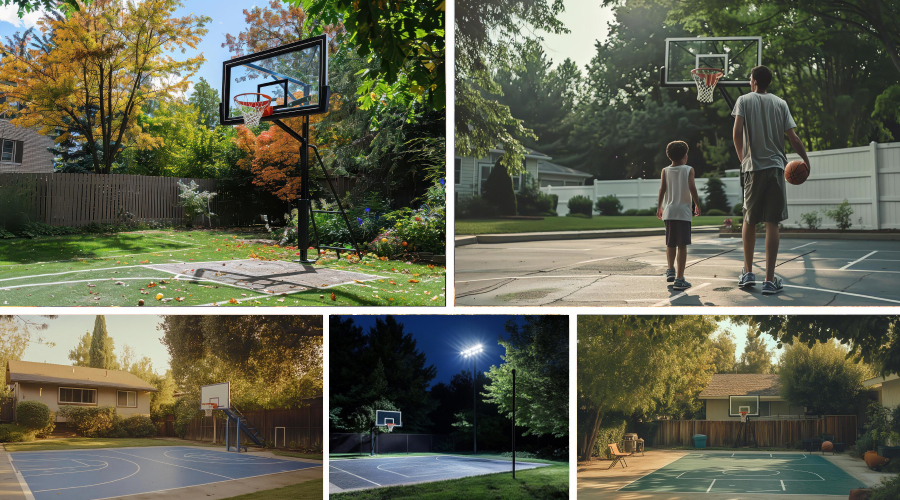
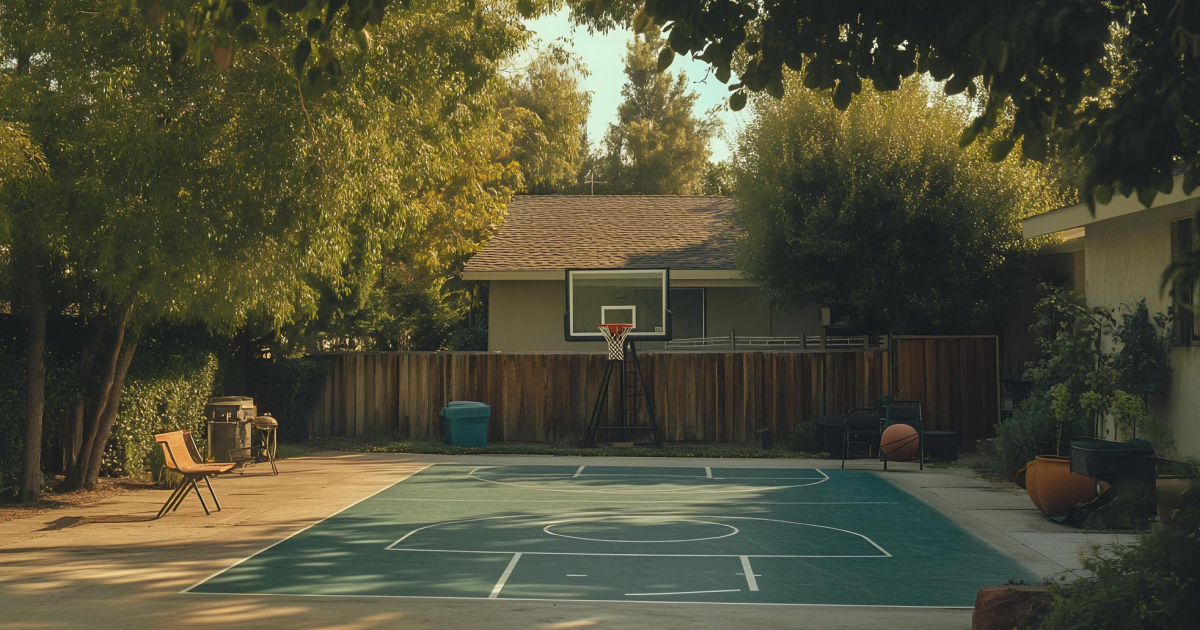
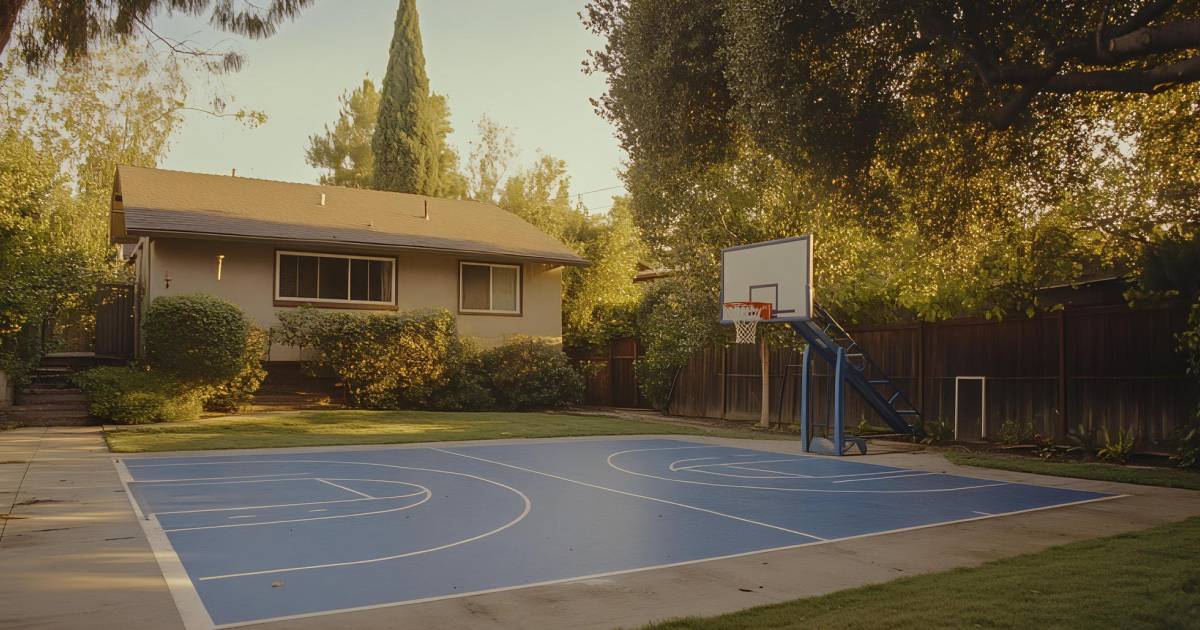
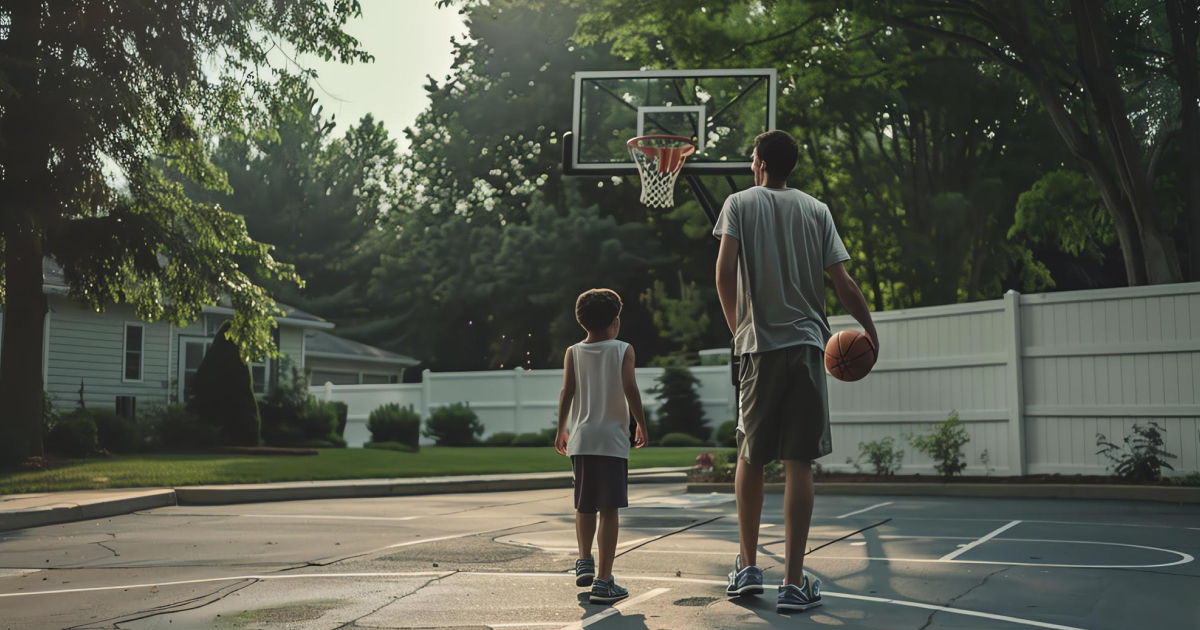
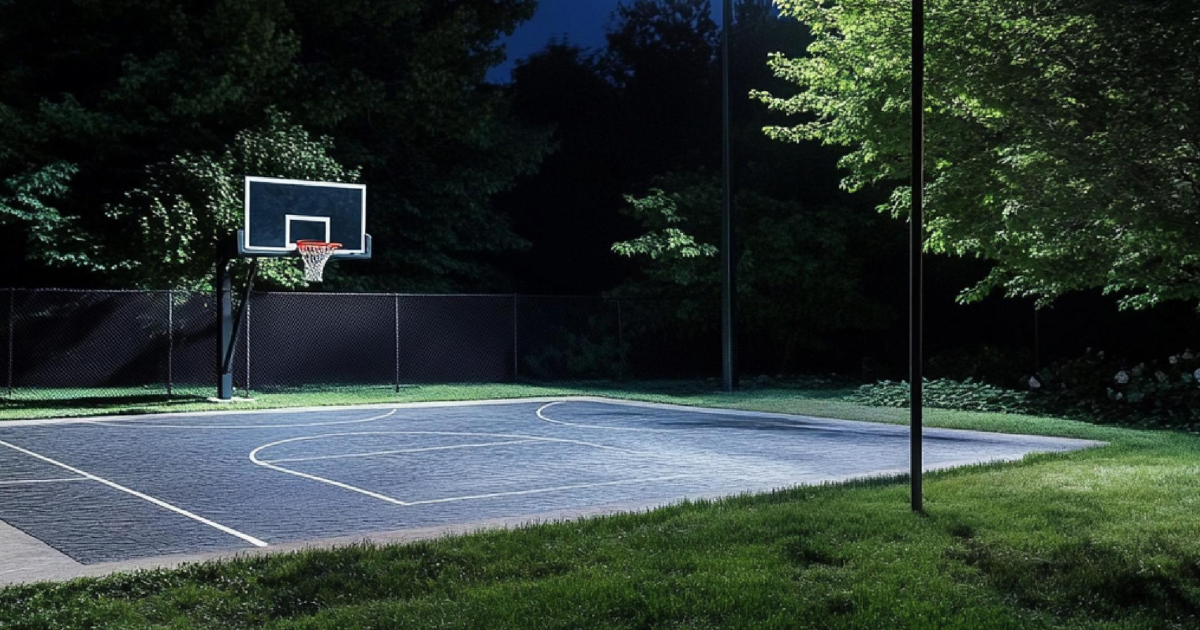
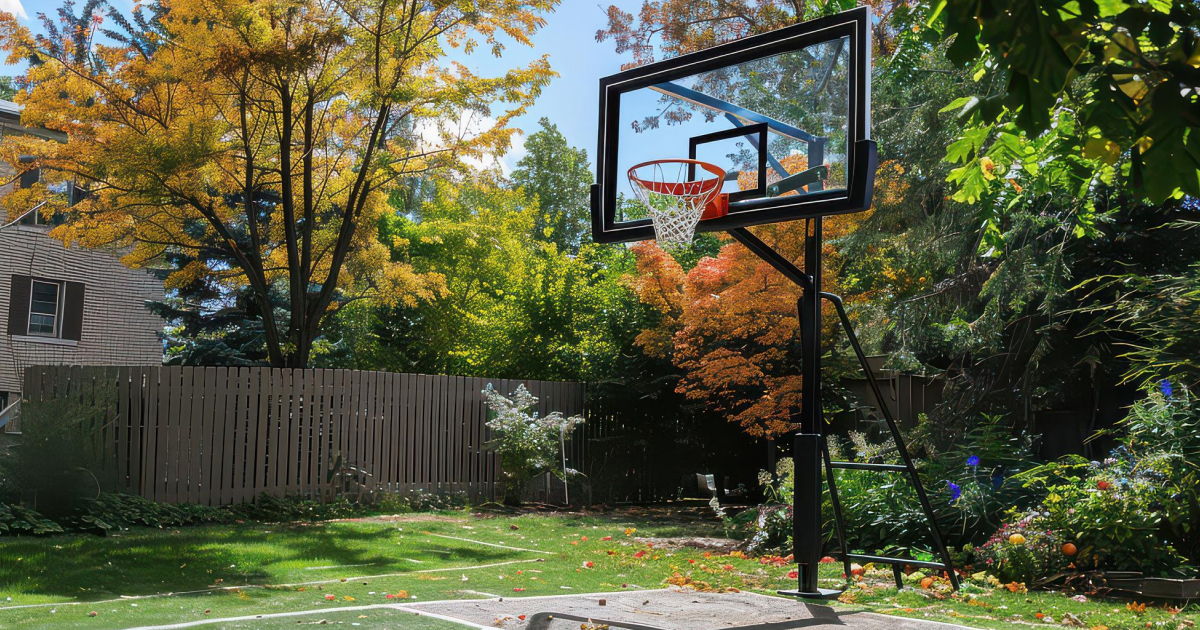
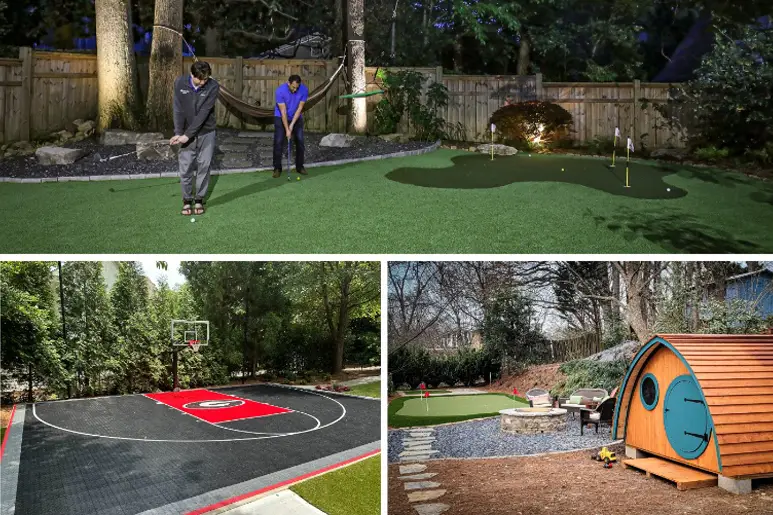 Outdoor Games & Courts Ideas For The Most Family-Friendly Backyard Ever
Outdoor Games & Courts Ideas For The Most Family-Friendly Backyard Ever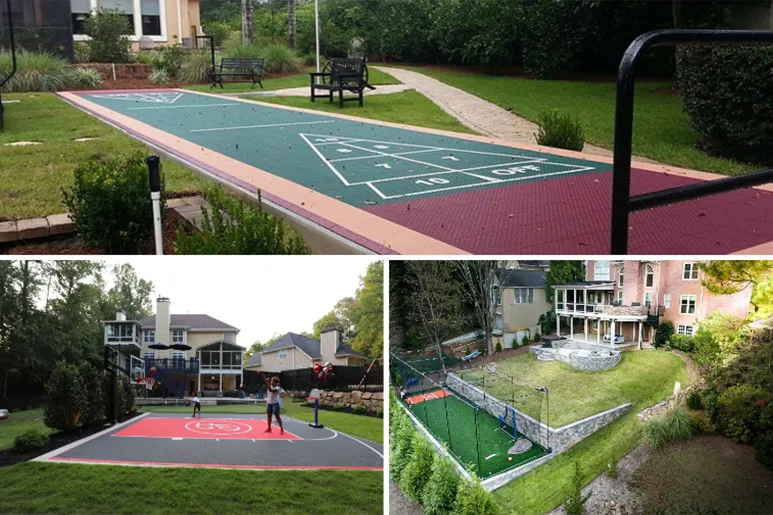 How To Clean And Maintenance Your VersaCourt Sport Court Tiles?
How To Clean And Maintenance Your VersaCourt Sport Court Tiles?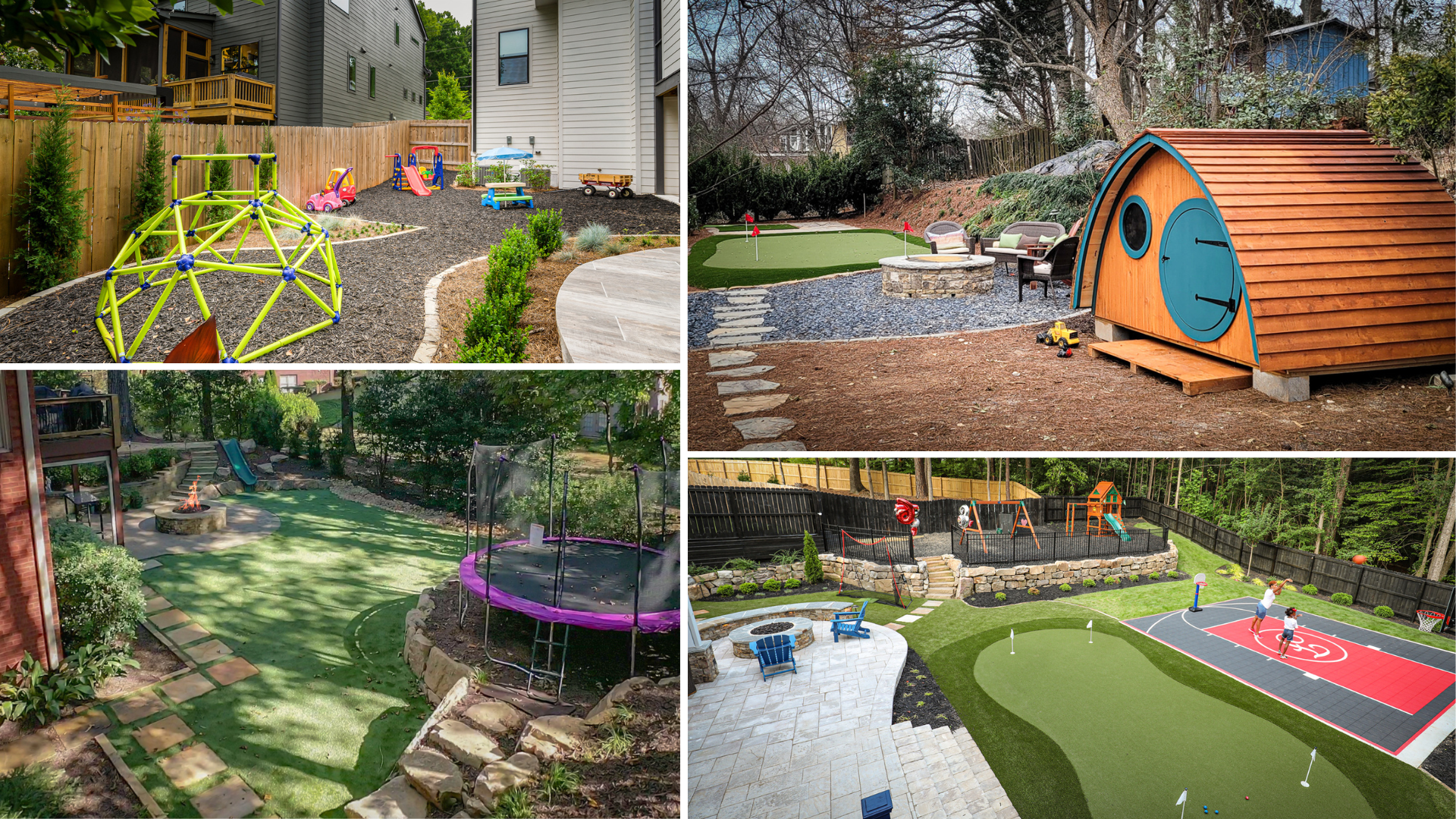 Designing Family-Friendly Backyards: Spaces for Play and Relaxation
Designing Family-Friendly Backyards: Spaces for Play and Relaxation
LET'S BE SOCIAL: